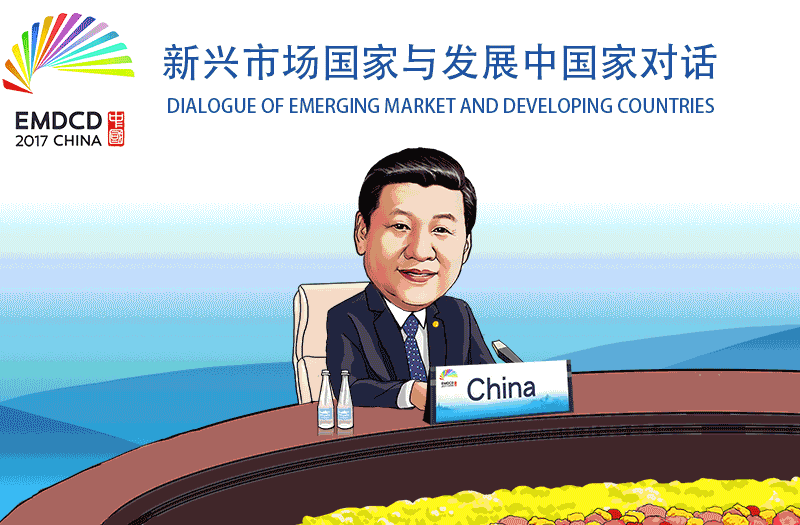By Zhang Maorong, Researcher of the International Economics Department, China Institute of Contemporary International Relations; cartoon drawings by Liao Tingting

The 9th BRICS summit closed on September 5, 2017 in the city of China's Xiamen, signifying the country's significant progress in "home field" diplomacy.
Chinese President Xi Jinping met journalists at the end of the summit, giving a summary of achievements made in the past three days, encompassing cooperation on results-oriented economy, political security and people-to-people exchanges.
China has also invited leaders from five other developing countries to engage in a Dialogue with the BRICS leaders.
That is one of China's proposals of "BRICS Plus" initiative in the summit, which enables more emerging markets and developing countries to join in the partnership network and development opportunities provided for them, and to strengthen South-South cooperation and build open, fair and all-round innovative development for the world economy.
The BRICS has now ushered in a second "golden decade". The Xiamen summit, as the starting point of the decade, has put a roadmap ahead and injected strong momentum for BRICS cooperation as a lighthouse. Meanwhile, it has created an "imprint of China" along the journey BRICS bloc is traveling and sails BRICS ship on a new voyage.
(The opinions expressed here do not necessarily reflect the opinions of Panview or CCTV.com. )

Panview offers a new window of understanding the world as well as China through the views, opinions, and analysis of experts. We also welcome outside submissions, so feel free to send in your own editorials to "globalopinion@vip.cntv.cn" for consideration.
















